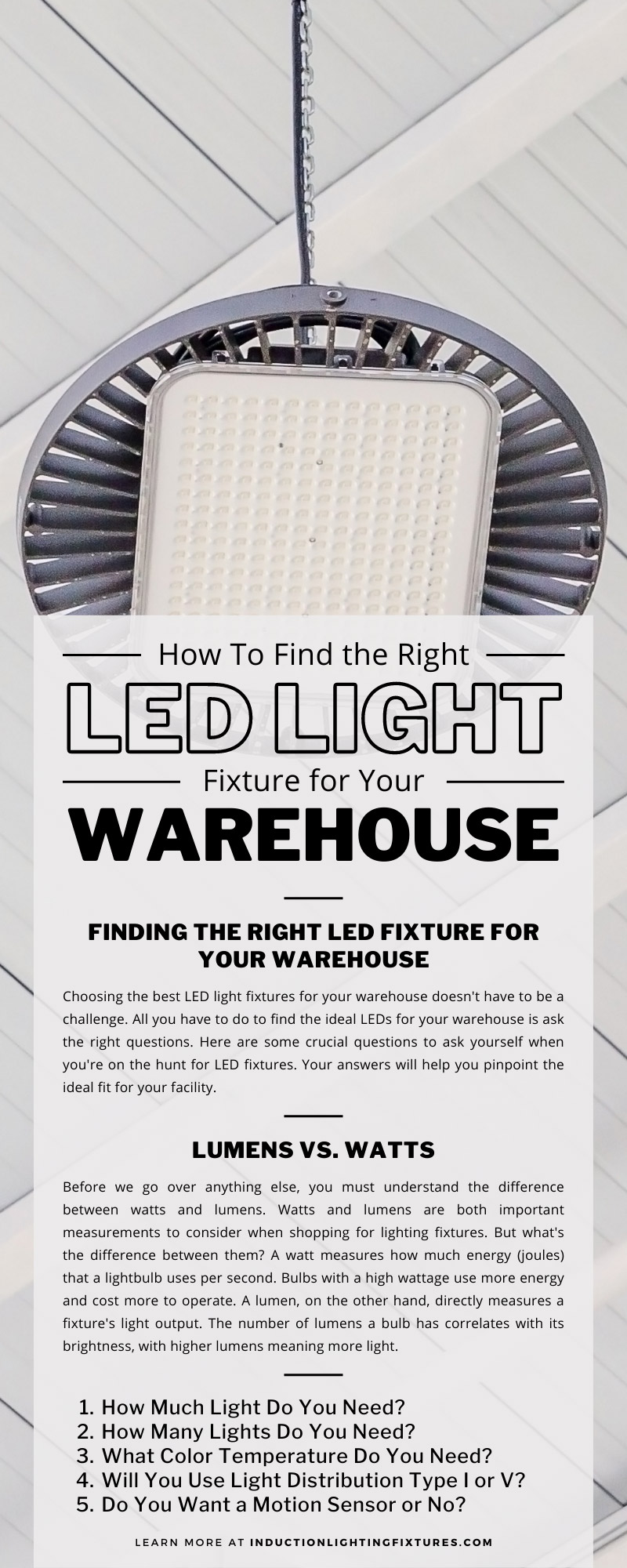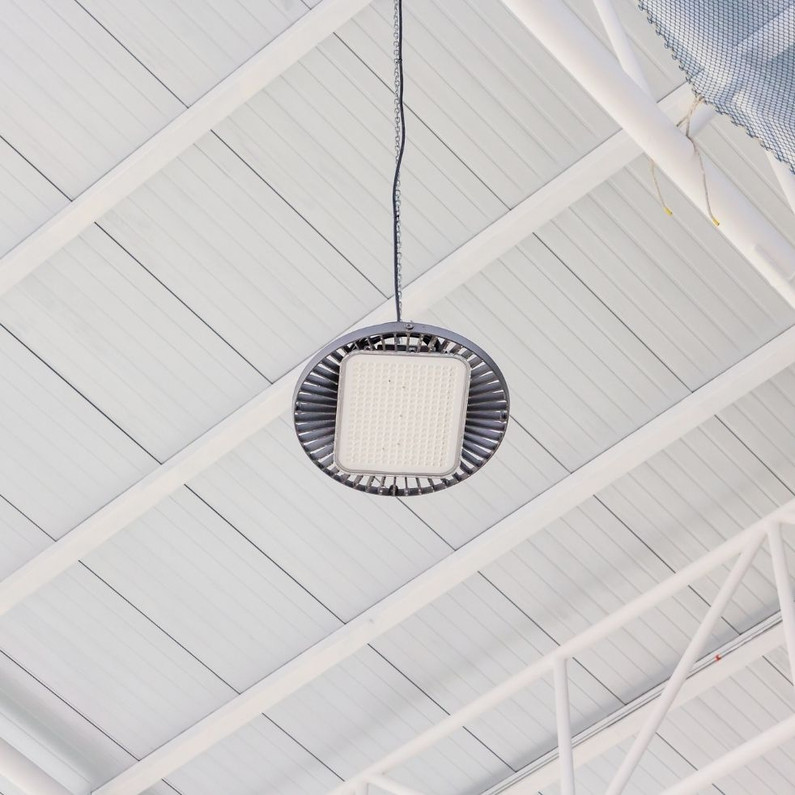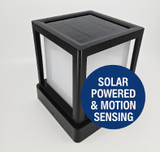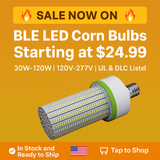How To Find the Right LED Light Fixture for Your Warehouse
Warehouses are big and busy places. And for you need a lot of light in such structures. LED light fixtures are ideal for use in warehouses due to their versatile design, intense illumination, and various other factors that we'll delve into here.
But with an abundance of options for LED lighting, choosing the best kind for your warehouse isn't easy. In this guide, we'll explain how to find the right LED light fixture for your warehouse.
Why Choose LEDs?
You have a variety of options when it comes to warehouse lighting. HID bulbs and fluorescent bulbs are two other light sources commonly used in warehouses. So why get LEDs? Why not utilize another light source instead? Simply put, LEDs are just better!
HID bulbs are inexpensive, but they don't have many color temperature options and tend to degrade (or fade) extremely quickly. They also have a warm-up and cool-off period. This means that you have to wait several minutes before they reach full intensity after you turn them on. And when you shut them off, you have to wait a certain period before you can turn them on again. Talk about inconvenient!
Fluorescent lights fix many of the faults of HID lights, but they aren't perfect. They don't function well in high or low temperatures, and the frequency with which you turn them on or off affects their lifespans.
LED lights aren't without their faults, either, but they're arguably the most faultless choice for warehouses. LEDs use less energy than alternatives without sacrificing luminosity. They can last anywhere from 10,0000 to a whopping 100,000 hours, which means you won't have to replace bulbs as frequently. Their versatile design lets you choose between various fixtures and even purchase retrofits for your preexisting fixtures. With LEDs, you can also choose between a variety of color temperatures.
As you can see, LEDs have numerous advantages over other options like HIDs or fluorescents. Are you thinking about choosing LEDs for your warehouse? Read on to discover how to find the right LED light fixture for your warehouse.
Finding the Right LED Fixture for Your Warehouse
Choosing the best LED light fixtures for your warehouse doesn't have to be a challenge. All you have to do to find the ideal LEDs for your warehouse is ask the right questions. Here are some crucial questions to ask yourself when you're on the hunt for LED fixtures. Your answers will help you pinpoint the ideal fit for your facility.
Lumens vs. Watts
Before we go over anything else, you must understand the difference between watts and lumens. Watts and lumens are both important measurements to consider when shopping for lighting fixtures. But what's the difference between them?
A watt measures how much energy (joules) that a lightbulb uses per second. Bulbs with a high wattage use more energy and cost more to operate. A lumen, on the other hand, directly measures a fixture's light output. The number of lumens a bulb has correlates with its brightness, with higher lumens meaning more light.
So, if you're not sure if a fixture will fit your budget, look at the wattage, and if you’re not sure if a fixture will emit enough light, look at the lumens. It's as easy as that.
How Much Light Do You Need?
You don't want to go overboard on light, but you don't want to use too little light, either. Both an excessive abundance and a lack of light can cause serious visibility issues in your warehouse.
So how much light does your warehouse need? Warehouses with plentiful windows and light-colored paint on the walls won't need as much artificial light as those with few windows and dark walls. In general, the less natural light your warehouse has, the more artificial light you need.
How Many Lights Do You Need?
Bigger warehouses obviously require more lighting. But there are a few other factors that influence how many lights you need. The height of your warehouse’s ceiling is one of these factors. A warehouse with a short ceiling requires fewer lights than a warehouse with a tall ceiling because a light that hangs lower shines more intensely. The lumens of the lights you use also matter. More lumens translate into more light coverage, and more light coverage means you need fewer lights to brighten up your space.
What Color Temperature Do You Need?
Color temperature may not seem particularly important, but the color temperature of your lights actually has a substantial impact on visibility. For warehouses, a color temperature between 4000K and 5000K is ideal. Lights with color temperatures that fall into this range emit a blue-white glow that's gentle on the eyes.
Will You Use Light Distribution Type I or V?
There are five light distribution types (I, II, III, IV, and V), but most warehouses use either type I or V. For warehouses with tall shelving units or equipment, type I is ideal. As it features long and narrow strips of spaced-out lights, this distribution pattern ensures lights won't become blocked due to high shelves or equipment. Type V is preferable for warehouses with tall ceilings or open floor plans since it distributes light over a wide area.
Do You Want a Motion Sensor or No?
Motions sensors aren't always necessary, but they can help you decrease your warehouse's energy use. Motion-activated lights shut off when they don't detect any movement. So, if no one is working in a particular area, you won't have to spend money illuminating that section. Of course, busy warehouses that operate 24/7 may find little use for this kind of system.
Need Help Choosing?
You have many options for warehouse light fixtures, such as linear lights, recessed lights, and troffer grid lights. So how do you choose?
ILF carries quality LED commercial light fixtures to meet your warehouse's needs. Shop with us today to find the perfect LED fixtures for your facility. If you need guidance, contact us at 855-453-2852, and one of our induction lighting experts will help you choose the right fixtures for your application.

Recent Posts
-
How Long Will Solar Powered Lighting Operate in the Rain?
How Solar Light Fixtures Can Run for 10 Rainy Days If you’ve ever wondered how a Commercial solar li …Jul 30th 2025 -
Spotlight - The IL-SPG54 Smart Solar Walkway Light: Where Performance Meets Simplicity
Introducing the IL-SPG54 Smart Solar Walkway Light: Where Performance Meets Simplicity When it comes …Jun 16th 2025 -
Corn Bulb Sale - While supplies last!
⚡ Limited Time Sale – BLE Series Corn Lamps Starting at $24.99! Stock up now while supplies last – p …Jun 11th 2025






